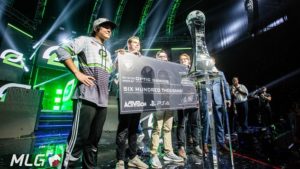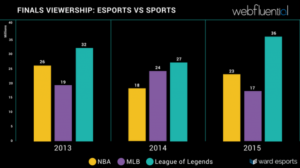Author note: Kim Cousins is PhD student and tutor at Curtin University. She can be contacted at kim.cousins@curtin.edu.au.
Abstract
This paper investigates the shift of communities from a physical to an online environment (covering both web 1.0 and web 2.0) and argues that virtual and traditional communities are more alike than they first appear, due to the types of networks employed and developed by participants. Although focused around an absurd topic, the subreddit Bread Stapled to Trees (BST) is an example of a strong virtual community and displays many characteristics of a traditional offline community including weak ties and strong social identity. The benefits for individuals within this type of community are numerous, including peer support and a sense of belonging. However, it should also be acknowledged that virtual communities are not necessarily seen as a replacement for physical communities.
Introduction
Online communities are sometimes viewed as less significant or ‘real’ than physical communities but these two forms of communities are quite similar in many ways (Langner & Seidel, 2014). Online, or virtual, communities allow for specialised discussions to form around often obscure topics between participants who would not likely meet in the offline world due to geographical constraints or varied social structures. Virtual and physical communities are more alike than they first appear, due to the types of networks employed and developed by participants (Cantoni & Danowski, 2015). Although often discounted as being based on weak ties, many of these groups, such as the subreddit BST, create a strong sense of community, belonging and social identity. The premise of BST is simple — community members take photos of bread they have stapled to trees and share the photos online through the link aggregation site Reddit. Other members then provide comments and moderation, as well as their own photos of bread stapled to trees. As this shows, the term community conjures up many different meanings but the most common one refers to it as a group of people with a shared goal (Ridings & Gefen, 2006). Community can also be defined as a group of people exhibiting elements of “social interaction, common ties and physical colocation” (Hillery, 1982). This interaction between community participants and their involvement in the community then creates a social system, which in turns helps them create and become a part of something bigger than themselves (Katz et al, 2004). In the context of this paper community refers to groups of people sharing an interest in a common activity in order to create a feeling of belonging. This helps give a sense of community and was once found mainly through social groups, sporting clubs and the like. Although these traditional communities still exist, virtual communities have become a source of belonging for many. Howard Rheingold was one of the first to coin the term virtual community, at a time when the internet and online world was relatively new for many of its participants (Rheingold, 1993). Rheingold called virtual communities “social aggregations” and discussed the potential this technology had to bring people together, at a time when people were spending more and more time apart (Rheingold, 1993). The next major step in the progression of virtual communities came when web 2.0 technology became available.
Web 2.0 is both a movement and a set of technological tools (Fuchs, 2014). It has contributed to a shift in society where community is commonly sought online. Starting in the early 2000’s, web 2.0 technology allowed for virtual communities to become interactive places where participants could spend time not only reading about other perspectives but also add to the discussion (Fuchs, 2014). Prior to web 2.0 tools being widely used, virtual communities operated through bulletin boards or electronic mailing lists, which contained static information, and made sharing information possible but a much slower process than it is today (Ridings, 2006; Wellman & Gulia, 1999). Participants could share information, but it was generally text-heavy and unable to be easily edited by others. Read-only access facilitated reading as a way of sharing knowledge and information, but meant participants were unable to engage in conversation (Kubiak, 2013). Web 2.0, with its two-way mode of communication through editing and commenting, made it easier to create spaces for virtual communities through increased communication and collaboration. An almost instant reply is now possible, allowing for deeper levels of communication between participants. Web 2.0 is further defined by trust between participants, collective intelligence and personal control over self-produced data (O’Reilly, 2005). These elements can be seen through Reddit, which follows a forum-style structure based around two main actions — sharing and community.
Networks and ties in community
Communities are an integral part of life regardless of the method participants use to communicate. Traditionally, community was used to denote a physical space, or spaces, where these people met and carried out shared goals (Katz, 2004). Since the growth of the internet and web 2.0 technologies, the spaces in which a community can operate have spread to include online. These virtual communities have not replaced physical communities, but often operate in tandem with them. Where physical communities can be limited in terms of participant numbers, virtual communities can incorporate any number of people. There are several characteristics of virtual communities which align with those of physical communities. A set of rules is integral to the structure of both types of communities, along with respect for other members and a certain level of communication (Feenberg & Barney, 2004). A strong community will have dedicated roles, regardless of whether it operates online, offline or across both environments. Strong communities also make the most of the various networks within them, as created through the ties of the participants. Weak ties and close ties are evident in both virtual communities and physical communities, however the development of virtual communities has led to a change in the way weak ties are used within networks. Weak ties refer to the relationships we form with people who we are not very close to — acquaintances, in other words. The people we are closer to, such as friends and family in most cases, form the basis of close ties, which are dominant in physical communities. However, virtual communities are now full of networks involving both weak and close ties within participants (Raine & Wellman, 2012). Web 2.0 and virtual communities have also allowed for these relationships to become more predominant in our lives. Although we are not particularly close to these people we can often build an idea of their identity through social media posts (Raine & Wellman, 2012).
Platforms such as Reddit encourage the creation of weak ties as well as the opportunity to develop these relationships into close ties. Part of the appeal is not just the ease in joining and participating in these communities, but the chance to share information — especially information based on opinion (Jenkins, 2006). These platforms and forums have developed from initial web 2.0 technologies to offer places where community and a sense of belonging can grow. Reddit creates an interesting type of virtual community as it encourages participants to take a structured role. Redditors are community moderators and the communities on Reddit are self-regulated. Moderation is carried out within each community on Reddit by these volunteers. Much like a physical community has roles and ranks, Reddit communities also assign moderators. These participants are responsible for the look and feel of the community through logos, for example, and by setting the parameters of the community. They act as a gatekeeper by removing offensive comments or participants and have the ability to bestow other participants with the role of moderator (Reddit, 2018). These structured roles have the ability to create, grow and maintain the various types of ties.
A quick analysis of Bread Stapled to Trees
Reddit is a community space which was initially based on funny videos and LOL-cat humour (Massanari, 2015). Platform policies have shaped the way it is now used and a unique culture has been created by Reddit users. It offers users a more anonymous presence than social networking sites like Facebook. Reputation can be gained through karma points and trophies (much like Snapchat) but users are not required to directly share any information about themselves. Users share links — on anything from current affairs to attaching bread to trees — and discussion is focused around the topics these links raise. With 79,400 members at the time this paper was written (growing from 63,503 members the previous month), BST is already much larger than the average physical community. Stapling bread to trees is acknowledged by the community members as being an absurd activity but fosters a sense of belonging. As community member Comedynerd said:

There are several aspects of the BST community which are similar to those of communities in general. Although BST is not a serious topic, the community follows a set of rules which are clearly displayed on the subreddit (see below).
Moderators, or ‘redditors’ are responsible for shaping and enforcing these rules and are expected to be shown respect by other community participants. Communication takes place within the community via photo posts and comments on other photo posts. Reddit uses a system based on what it calls karma points. Participants are rewarded for both sharing information (through links or photos) and commenting on other people’s posts. Karma points indicate the frequency of positive actions by participants and are voted on by others in the community, giving increased standing and building respect. This is not just a competitive action; it was devised to promote altruistic behavior (Reddit, 2018). This aligns with the O’Reilly’s initial nature of the internet, especially in regard to web 2.0 as a collaborative and community-based forum (O’Reilly, 2005).
Once classified as “novelty accounts” (Bergstrom, 2011), communities such as BST, have a number of benefits for participants looking for the experience of being part of a community. There are many individual reasons why people choose to become a part of specific communities but the overarching factors are to gain information, share values and facilitate human contact (Ridings & Geffen, 2006). These factors encourage us to become involved with communities and relate to networking and bonding, as well as a sense of belonging. Social identity is a key element of this belonging (Jenkins, 2014) and a major part of communities such as Reddit and BST. Social identity helps drive communities through the creation and ownership of ideas and movements, and it is collective intelligence that drives virtual communities (Jenkins, 2006). By combining knowledge and resources, communities can do much more than individuals. This is true for both virtual and physical communities. Although virtual communities continue to grow in popularity, it should be noted that the concept of physical community is still important. There is current research suggesting the encouragement of physical community centres as a preventative health measure for participants (Monbiot, 2018).
Conclusion
Virtual and physical communities are more alike than they first appear, due to the types of networks employed and developed by participants. This similarity has developed over time, beginning with mainstream use of the web and continuing with the transition of web 1.0 to web 2.0. For the BST community, recording and sharing the physical act of stapling bread to trees creates a feeling of involvement and belonging, as well as social identity. These elements of community were common in our lives when we were heavily involved in physical communities and continue in virtual communities. Both virtual and physical communities are important in contemporary society and, as the existence and popularity of platforms such as Reddit shows, can provide participants with many benefits. The ties and networks created through virtual communities, even ones based around absurd topics like BST, can be just as strong as the ones formed through physical, offline communities. A global movement involving the act of stapling bread to trees is not likely to cause massive change but the act of building a kind community, based around sharing with others and being a part of something bigger than yourself, could.
References
Aguiton, C. and Cardon, D. 2007. The Strength of Weak Cooperation: An Attempt to Understand the Meaning of Web 2.0. Communications & Strategies, 65(1).
Bergstrom, K. 2011. “Don’t Feed the Trolls”: Shutting down debate about community expectations on reddit.com, First Monday, 16(8).
Cantoni, L. and Danowski, J.A. (2015). Communication and Technology. Berlin, Germany: De Gruyter.
Feenberg, A. and Barney, D. (2004). Community in the Digital Age: Philosophy and practice. Maryland, VA: Rowman & Littlefield.
Fuchs, C. (2014). Social Media: A critical introduction. Thousand Oaks, CA: Sage Publications.
Hillery, G.A. (1982). A Research Odyssey: Developing and testing a community theory. New Brunswick, NJ: Transaction.
Jenkins, R. (2014). Social Identity. New York, NY: Routledge.
Jenkins, H. (2006). Convergence Culture: Where Old and New Media Collide. New York, NY: NYU Press.
Katz, J. E., Rice, R. E., Acord, S., Dasgupta, K., & David, K. (2004). Personal Mediated Communication and the Concept of Community in Theory and Practice. In P. Kalbfleisch (Ed.), Communication and Community: Communication Yearbook 28 (pp. 315-371). Mahwah, NJ: Erlbaum.
Kubiak, T. (2013). Social Media Measurement, Marketing of Scientific and Research Organizations, 2(8).
Massanari, A. (2015). Participatory Culture, Community and Play: Learning from Reddit. New York, NY: Peter Lang.
Langner, B. and Seidel, V.P. (2014). Sustaining the Flow of External Ideas: The role of dual social identity across communities and organizations, Journal of Product Innovation Management, 32(4).
Monbiot, G. (2018). ‘The town that’s found a potent cure for illness — community’, The Guardian, https://www.theguardian.com/commentisfree/2018/feb/21/town-cure-illness-community-frome-somerset-isolation?utm_source=nextdraft&utm_medium=email, accessed March 25, 2018.
O’Reilly, T. (2005). ‘What Is Web 2.0: Design Patterns and Business Models for the Next Generation of Software’, O’Reilly, http://www.oreilly.com/pub/a/web2/archive/what-is-web-20.html, accessed April 28, 2018.
Putnam, R. (2000). Bowling Alone: The collapse and revival of American community. New York, NY: Simon & Schuster.
Raine, L. and Wellman, B. (2012). Networked: The new social operating system. Cambridge, MA: MIT.
Reddit. (2018). Frequently Asked Questions. https://www.reddit.com/wiki/faq, accessed April 30, 2018.
Reddit. (2018). Moderation, https://www.reddit.com/wiki/moderation, accessed April 30, 2018.
Rheingold, H. (1993). The Virtual Community: Homesteading on the electronic frontier. Reading, MA: Addison-Wesley.
Ridings, C. and Gefen, D. (2006). ‘Virtual Community Attraction: Why People Hang Out Online’, Journal of Computer-Mediated Communication, https://doi.org/10.1111/j.1083-6101.2004.tb00229.x
Wellman, B. and Gulia, M. (1999). Net Surfers Don’t Ride Alone: Virtual communities as communities. In Kollock, P. and Smith, M (eds). Communities and Cyberspace. New York, NY: Routledge.
This work is licensed under a Creative Commons Attribution-NonCommercial-NoDerivatives 4.0 International License.
Banner credit: /u/despot1







